#lagrange point
Text
We Help, Lost & Found
Danny after all the things back home settle down (finally), decides to open a little lost and found vintage shop.
(As part of his royal training as prince before his coronation to happen to officially be King, he needs to know how to manage the GZ and have good relations with em, and this is good practice)
The things he sell are given to him by the other ghost who wish for their belonging to be return to someone important to them when they were alive (family, descendant, friends, a past lover, a helpful stranger)
Danny's shop is somewhat connected to his haunt, and with his space core it can have a weird effect to the people passing near his shop, giving them the feeling of them having to go inside because there is something important in there waiting just for them.
-
The shop starts to gain a reputation.
People can understand to a level how the shop had their families old furniture or a specific jacket from your great-gramps, but entire albums worth of picture that you were sure were destroyed in a fire or have lost for many decades tends to raise some eyebrows.
People start to talk.
-
Duke just casually walked by the shop, his neck cracking by the force of how fast he turned to look at this little shop he was sure was not there yesterday: " Uh, guys was I dosed with something or is there somehow a black hole just inside that shop?!"
(Cue the Batfam being hella nosy and -oop Bruce casually going inside to investigate inside the shop)
Bruce: " Hello just checking out at the interesting stuff in he- is that my mother's pearl necklace!"
-
Danny's enjoying the whole thing, he gets to reunite sentimental things to people & and be an absolute troll.
Danny trying not to grin: "Why no sir! I had no idea how Important these things are I'm just selling them, oh I'm selling things that went missing and were part of a crime scene?! How terrible!"
-
Just an Idea
#Lagrange Point#dp x dc#danny phantom#dc x dp#dpxdc#danny fenton#batman#space#dp x dc crossover#dc x dp crossover#bruce wayne#batfamily#batfam#ghosts#ghost king danny#ghost king danny phantom#well not yet#he's ghost prince#dp x dc prompt#dc x dp prompt#writing prompt
3K notes
·
View notes
Text
Lagrange Point (Konami, 1991)
#lagrange point#lagrange point 1991#Famicom#Famicom music#have had this song stuck in my mind lately...#maybe it's a signal that I should finally play lagrange point#it seems like an interesting game
172 notes
·
View notes
Text

Hmm, some thoughts.
"Red Directive" - evocative of the prime directive, the omega directive, and perhaps red matter (which jives with my supposition that the secret that they're looking for is linked with the Romulan supernova somehow), and red angel (though I hope it's not that).
"Under the Twin Moons" - A return to Coppelius from PIC season 1, perhaps? Would be interesting to see how the androids have progressed over the last thousand years (and I noticed a thing that looked like that Romulan puzzle box in the trailer).
"Mirrors" might be yet more mirror universe stuff (though I hope not).
There's not too much to infer from the other titles, but "Life, Itself" sounds like it might be related to the proto-humanoids from "The Chase" (or perhaps synthetic life?).
All of this is just wildly speculative, of course.
#star trek discovery#red directive#under the twin moons#jinaal#face the strange#mirrors#whistlespeak#erigah#labyrinths#lagrange point#life itself
17 notes
·
View notes
Text
Every once in a while, I like focusing on old/obscure games that often don't leave Japan. Every other time, I like focusing on anything involving the use of FM Synth and similar in older games...
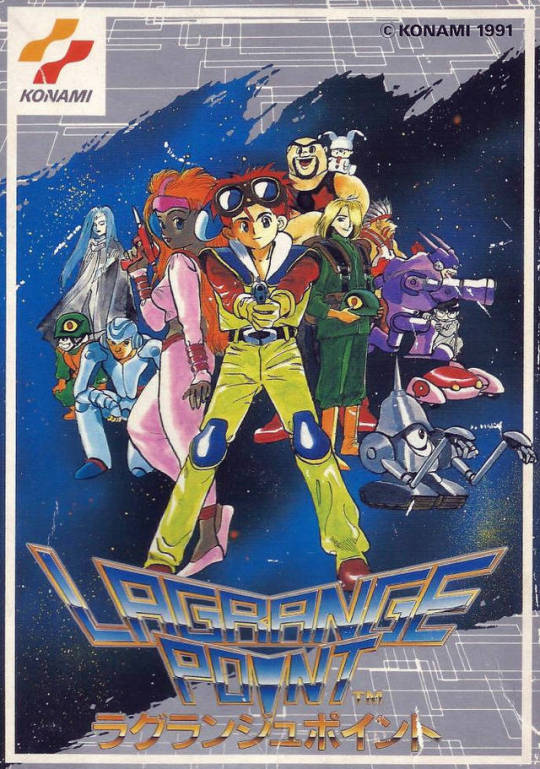
So let's talk about the time Konami just straight up crammed FM Synth audio into the Famicom.
Yes, this is how it actually sounds in-game.

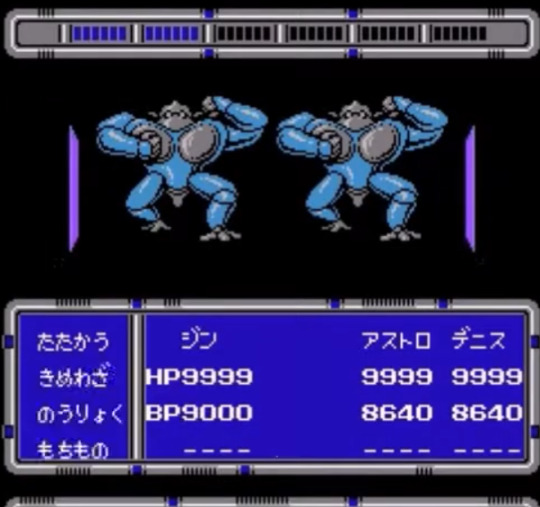

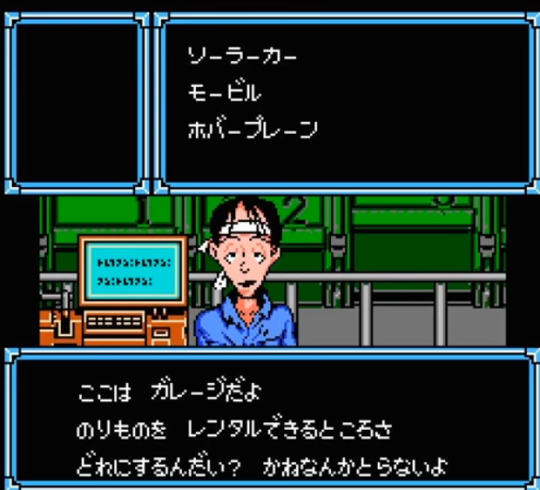
Lagrange Point is a Sci-fi JRPG released in 1991, late into the Famicom's run (and apparently at a much higher price than other titles).
Despite this, the game did see moderate success and was obviously praised for the sound quality compared to any other Famicom title.
Gameplay-wise, it does feature some pretty unique mechanics fitting the setting. Instead of MP, you instead rely on BP (Battery Points) which needs to be recharged every so often.
BP also dictates every move you make - including normal attacks - so you're encouraged to finish fights as efficiently as possible.
But going back on topic: The sound.
How Konami made the sound work was by using the VRC7 chip (not VRC6, mind you). This one contained a modified version of the YM2413 chip which is what allows for FM Synth audio, and gives the soundtrack that "Sega Genesis" flair (though if you want to get technical, it's actually closer to the Master System and MSX).
As you can probably imagine, it was exclusive to the Famicom and so was not used anywhere outside of Japan. In fact, Lagrange Point is one of two games who have ever used VRC7, and the only one who made full use of the extra channels given by the YM2413 chip.
(If you're curious, the other game with the VRC7 chip is... Tiny Toon Adventures 2. No, it doesn't sound similar at all.)
If you want to try the game out, it has thankfully been translated all the way back in 2014. Which means one can freely play it without worrying about language barriers...
#lagrange point#game music#famicom#funnily enough i found out about this game due to a japanese ''rpg battle theme'' list#it was a good list because it had the dark spire on it.#so anyways play the dark spire#...wait no wrong game-#jrpg
7 notes
·
View notes
Text
Infographic i made of the Lunar region. I took the liberty of adding a memorable name to each Lagrange point. For example, Midnight L2 is a point directly over whichever part of the Earth is experiencing midnight.
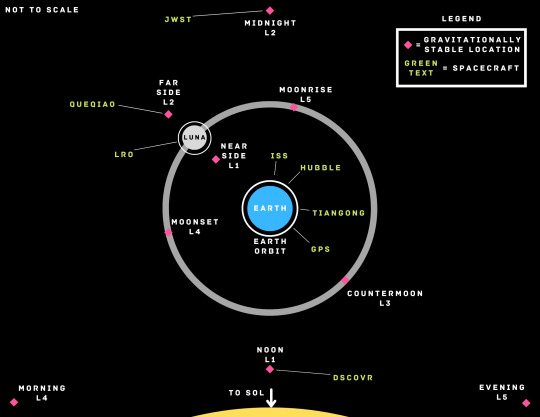
9 notes
·
View notes
Text
i know i don’t talk about pythagoras productions much but i still love it. & my god i think the boys look stunning here. especially my aru 💞 (& teruma never stops looking good)

#I was going to post this whenever rejet posted it but forgot#pythagoras productions#marginal4#unicorn jr#lagrange point#golden record#rejet
3 notes
·
View notes
Text








14 notes
·
View notes
Video
[ Famicom 39th Anniversary Stream ]
#NES#nintendo entertainment system#famicom#zplayz#guardian legend#metal storm#xexyx#metroid#crisis force#journey to silius#street fighter 2010#lagrange point
9 notes
·
View notes
Text
The Earth-Sun LaGrange point is about 1,000,000 miles sunwards of us. A giant sunshade positioned there would be in a stable orbit, and need only continuously block less than 2% of the Sun’s light from reaching Earth to place our planet back into temperate equilibrium. The financial cost would be huge, enough to require a global effort, and could cost as much as 10% of the world’s current military budget (a bargain relative to value received). Techion is attempting to build and launch a 100 square ft. pilot sunshade, as a demonstration of the technology.
0 notes
Text
youtube
LaGrange Point sure is a NES scifi RPG https://www.youtube.com/watch?v=M0ufvgflKc4
0 notes
Text
First Evidence
General Reager informs the President that an alien satellite is parked at Lagrange Point 2.
In First Signal General Reager informs the President of the United States that an alien satellite has been discovered parked at Lagrange Point 2. This is the same position in space that the famed James Webb Telescope is positioned. Last week a report from NASA stated that there is no evidence of…

View On WordPress
#First Signal Movie#James Webb Telescope#Lagrange Point#NASA#political thriller#science fiction#SOS United States#UAP#UFO#Worcester Art Museum
1 note
·
View note
Audio
0 notes
Text
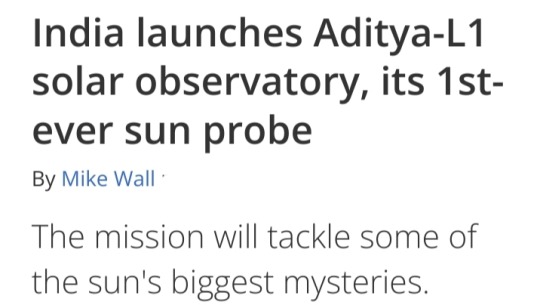
2 September 2022
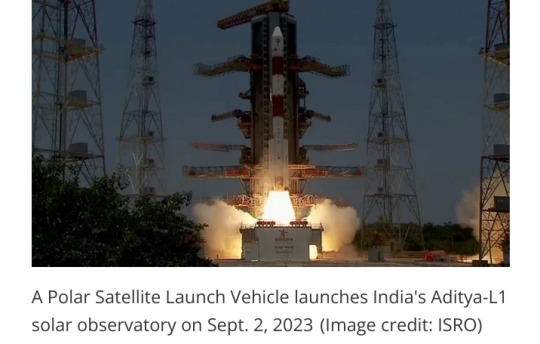
Fresh off its success at the moon, India is now headed for the sun.
The nation launched its first-ever solar observatory today (Sept. 2), sending the Aditya-L1 probe skyward atop a Polar Satellite Launch Vehicle (PSLV) from Satish Dhawan Space Centre at 2:20 a.m. EDT (0620 GMT; 11:50 a.m. local India time).
The PSLV deployed Aditya-L1 into low Earth orbit (LEO) as planned about 63 minutes after liftoff, sparking applause and high fives in mission control.
"Congratulations, India, and congratulations, ISRO [the Indian Space Research Organisation]," Jitendra Singh, India's Minister of State for Science and Technology, said shortly after deployment on ISRO's launch webcast.
"While the whole world watched this with bated breath, it is indeed a sunshine moment for India," Singh added.
The successful launch followed on the heels of another big milestone for India: On August 23, its Chandrayaan-3 mission became the first to land softly near the moon's south pole.
Chandrayaan-3's lander-rover duo are expected to conk out in a week or so, when the harsh lunar night falls at their touchdown site. But Aditya-L1's long journey has just begun.
A long road to a good sun-viewing spot
Aditya-L1 won't stay in LEO forever:
After a series of checkouts, it will use its onboard propulsion system to head toward Earth-sun Lagrange Point 1 (L1), a gravitationally stable spot about 1 million miles (1.5 million kilometers) from our planet in the direction of the sun.
That destination explains the latter part of the mission's name. And the first part is simple enough: "Aditya" translates to "sun" in Sanskrit.
The 3,260-pound (1,480 kilograms) observatory will arrive at L1 about four months from now, if all goes according to plan.
But the long trek will be worth it, according to the ISRO.
"A satellite placed in the halo orbit around the L1 point has the major advantage of continuously viewing the sun without any occultation/eclipses," ISRO officials wrote in an Aditya-L1 mission description.
"This will provide a greater advantage of observing the solar activities and its effect on space weather in real time."
Indeed, another sun-studying spacecraft is already at L1 — the Solar and Heliospheric Observatory (SOHO), a joint NASA-European Space Agency mission that launched in December 1995.
(Several other spacecraft, including NASA's James Webb Space Telescope, are at Earth-sun Lagrange Point 2, which is a million miles from Earth, in the direction away from the sun.)

Solar flares, the coronal heating mystery and more
Once it's settled in at L1, the solar probe will use four three science instruments to study the particles and magnetic fields in its immediate surroundings and four others to scrutinize the sun's surface (known as the photosphere) and its atmosphere.
This work will help scientists better understand solar activity, including the dynamics of solar flares and coronal mass ejections (CMEs), ISRO officials say.
Flares are powerful flashes of high-energy radiation, and CMEs are huge eruptions of solar plasma.
Both types of outburst can affect us here on Earth. Intense CMEs that hit our planet, for example, trigger geomagnetic storms that can disrupt satellite navigation and power grids.
(As a side benefit, such storms also supercharge the gorgeous light shows known as auroras.)
Aditya-L1 will also tackle the "coronal heating problem," one of the biggest mysteries in heliophysics.
The corona — the sun's wispy outer atmosphere — is incredibly hot, reaching temperatures around 2 million degrees Fahrenheit (1.1 million degrees Celsius), according to NASA.
That's about 200 times hotter than the solar surface, which is "only" 10,000 degrees F (5,500 degrees C) or so.
It's still unclear what is responsible for this startling and counterintuitive discrepancy.
(Why would it be hotter away from the sun's core, where the energy-producing nuclear fusion reactions are occurring?)
Aditya-L1 has other science goals as well. For instance, the mission also aims to more fully flesh out the solar wind, the stream of charged particles flowing constantly from the sun, ISRO officials said.
Aditya-L1 will measure the composition of the solar wind and attempt to determine how it is accelerated.
And Aditya-L1 will do all this work on the cheap:
The mission's price tag is about 3.8 billion rupees, or $46 million US at current exchange rates.
That's in the same ballpark as Chandrayaan-3
India's first successful moon-landing mission costs about 6.15 billion rupees, or $74 million US.
For comparison, NASA's most recent big-ticket sun mission, the record-setting Parker Solar Probe, costs roughly $1.5 billion.
This disparity should not be viewed as an indictment of NASA, however; labor costs are much higher in the United States than in India, among other differences between the two nations' economies.
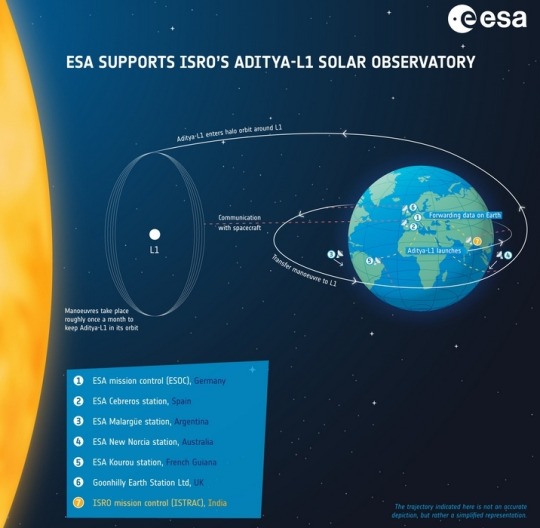
Aditya-L1 is a coronagraphy spacecraft to study the solar atmosphere, designed and developed by the Indian Space Research Organisation (ISRO) and various other Indian research institutes.
#India#Aditya-L1#Polar Satellite Launch Vehicle (PSLV)#Satish Dhawan Space Centre#low Earth orbit (LEO)#sun#Indian Space Research Organisation#Chandrayaan-3#Earth-sun Lagrange Point 1 (L1)#Solar and Heliospheric Observatory (SOHO)#solar flares#coronal mass ejections (CMEs)#coronal heating problem#heliophysics#solar wind#Parker Solar Probe#NASA#solar observatory#solar atmosphere
12 notes
·
View notes
Text
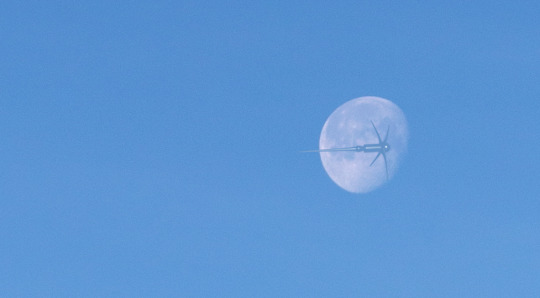
"Can the captain of the Exodus class Ktletuccete starship parked near Luna please move your vessel to a Sol-Earth Lagrange point four? Earth-Luna Lagrange point one is not an acceptable orbit for a vessel of your mass. Thank you."
11 notes
·
View notes
Text








7 notes
·
View notes
Photo

It's difficult to orbit L6 stably due to gravitational perturbation from Akron and Toledo.
L6 Lagrange Point [Explained]
20 notes
·
View notes